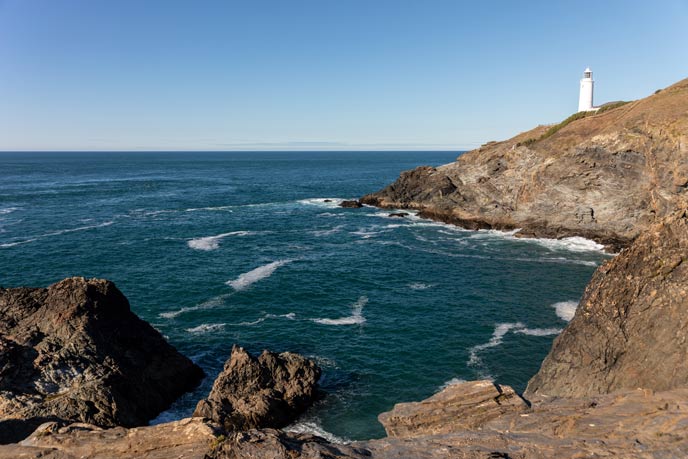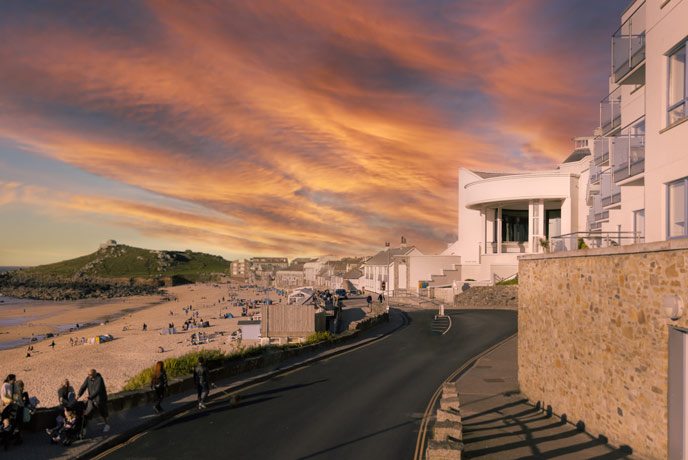Churches have always been places of refuge and safety, whatever your religious beliefs they offer visitors an oasis of calm and an escape from the hubbub of modern daily life. Many of these ancient structures, once at the heart of every community and often the oldest building for miles around, are also very beautiful and full of incredible examples of art and craftsmanship. The best examples are architectural masterpieces and incredibly precious repositories of history.
So, for those searching for a moment of peace, some time for reflection or perhaps just interested in discovering some forgotten treasures from the past, then Cornwall’s churches have so much to offer. Here is our guide to some of the most beautiful churches to be found across the length and breadth of Cornwall.
St Just in Roseland Church
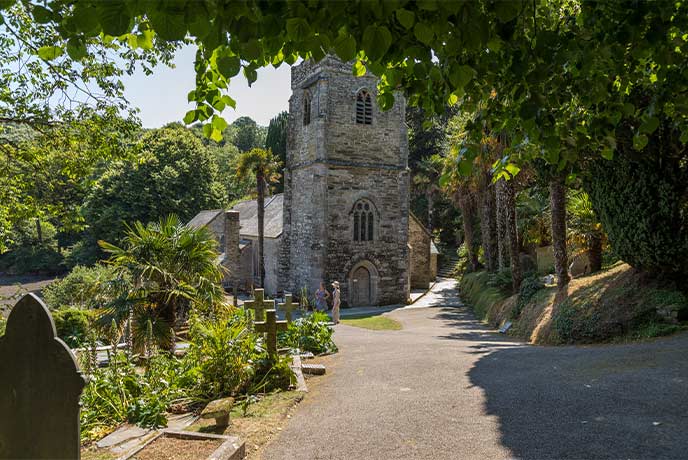
This idyllic church tucked away beside a silent creek on the Roseland Peninsula is famous for one thing – just how beautiful it is. The location could hardly be more tranquil. In a deep, lush valley the peaceful tidal waters of the Carrick Roads lap against the wall of a churchyard that feels more like a tropical garden. Giant beech trees shade the gravestones and a verdant display of palms, bamboos, myrtles and hydrangeas show off nature in all her glory.
St Just in Roseland church dates from the 13th century, though there has been a place of worship on this site since the 6th century when it is said that St Just had his hermitage here. The church and its surroundings have a truly timeless quality, while its closeness to the water and therefore the ships and traders that would have visited Falmouth means that sailors from across the globe have worshipped in this little building. Perhaps the most fascinating legend claims that Joseph of Arimathea, a travelling merchant, may have stepped ashore here, accompanied by his nephew, Jesus.
The Roseland remains one of the least visited areas of Cornwall and beyond this church there is plenty more to see, you are just a short hop from St Anthony Head and its striking lighthouse or the imposing Tudor castle at St Mawes where you could even jump on a ferry for a trip across the bay to Falmouth. We love the peaceful river walk from St Mawes to St Just in Roseland, it's simply magical.
St Winwaloe’s Church, Church Cove, Gunwalloe
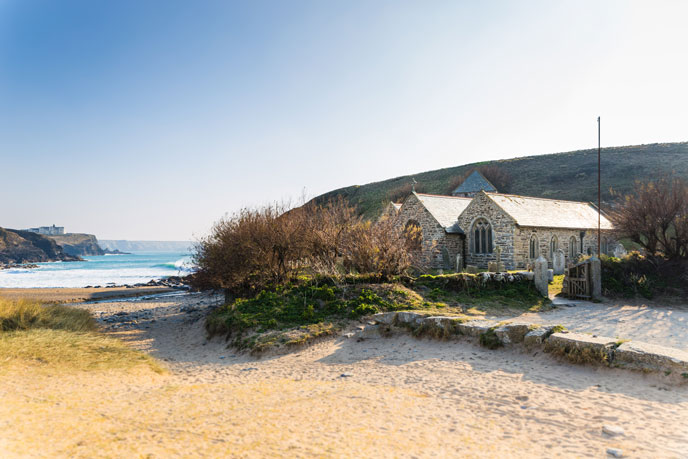
Known as ‘The Church of Storms’ the romantic little church of St Winwaloe’s is extraordinary in many ways, chiefly its close proximity to the sea although you might also recognise it as a filming location for much-loved series Poldark. In rough weather waves literally beat against the churchyard walls! The squat little building nestles between two beaches, Church Cove and Dollar Cove, both notorious for shipwrecks, and the headland above the church was once the site of an Iron Age cliff castle.
Said to have been founded in the 5th century, most of the present church is medieval with a fine wagon roof and Norman font. Usually it also has a detached bell tower which seems to stand with its back pushed against a sand dune. Inside the thick walls, one of the most fascinating features is a 15th century screen painted in bright colours depicting the apostles and the Crucifixion. Legend has it that this screen arrived on these shores on 19th January 1527 when the Portuguese treasure ship The Saint Anthony was wrecked on Gunwalloe’s beach. Dollar Cove also gets its name from another wreck, this time a Spanish ship, the Rio Nova that went down in 1802 with a cargo of dollars and gold and silver plates. Out of 19,000 dollars on board, about 12,000 were recovered meaning that coins are still sometimes washed up on the beach.
St Winwaloe’s stands not far from the traditional market town of Helston, famous for its Flora Dance but is also within reach of the isolated Lizard Peninsula where you’ll find picturesque fishing villages and fascinating geology aplenty.
St Hilary’s Church, St Hilary
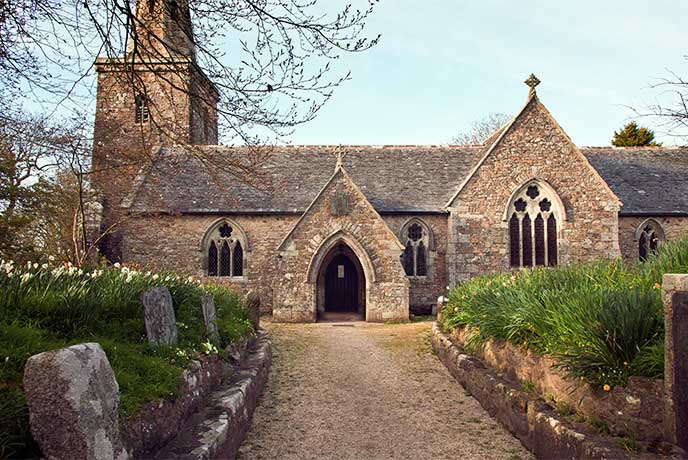
At first glance the church of St Hilary may seem like an unlikely candidate for one of the most beautiful churches in Cornwall. From the outside it looks like a pretty but fairly ordinary, grey granite building, like so many churches in the region. Step inside however and you will discover one of the finest collections of art to be found in any church in the south west. And ironically this incredible collection is the result of a disaster.
In March 1853 St Hilary’s Church was completely gutted by fire, everything but the 13th century tower was destroyed. Over the next couple of years the community, along with the architect William White, managed to rebuild, but although the fabric of the building was restored the interior remained disappointingly bare. Annie Walker, the wife of the local vicar, was an artist and she decided to take action. Annie approached her friends for help and these friends just so happened to be members of the famous ‘Lamorna Group’ of artists from the Newlyn School of Art.
Annie commissioned them to decorate the church with their work – altar pieces, panels and paintings. As a consequence this little church has the atmosphere of a gallery, with works by Harold Knight, Alethea and Norman Garston, Ernest Proctor and Gladys Hynes adorning the walls. It is truly an unexpected treasure trove!
You can find St Hilary in West Cornwall about half way between Helston and Penzance tucked away down backroads not far from the National Trust property of Godolphin House.
St Enodoc Church, St Minver
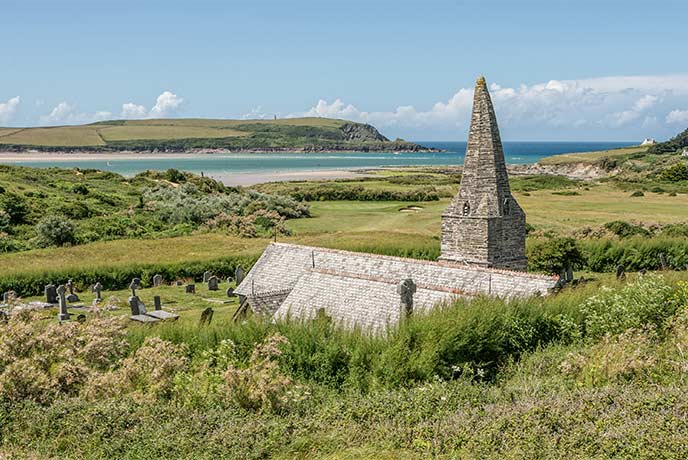
The magical church of St Enodoc close to the coast in North Cornwall feels a world away from modern life. With its distinctive crooked spire, this ancient chapel was once almost completely buried by the shifting sands of the dunes that surround it. It is said that the sand piled around the walls up to the level of the roof, and for much of the 18th and early 19th centuries the only way to access the 600 year old building was by climbing through a skylight in the north transept!
The church was eventually excavated and restored in 1864 by J. P. St Aubyn and today is a charming place to discover that still retains that uncanny atmosphere of being somewhat lost in time. Encrusted by yellow lichen and blackened by the salt winds, from a distance the slate spire looks like a sail of a ship, adrift on the dunes.
Although St Enodoc’s church may feel remote it is actually within easy reach of Padstow and Rock with their fabulous eateries, including Michelin star restaurants and a dreamy local vineyard.
St Nonna’s Church, Altarnun
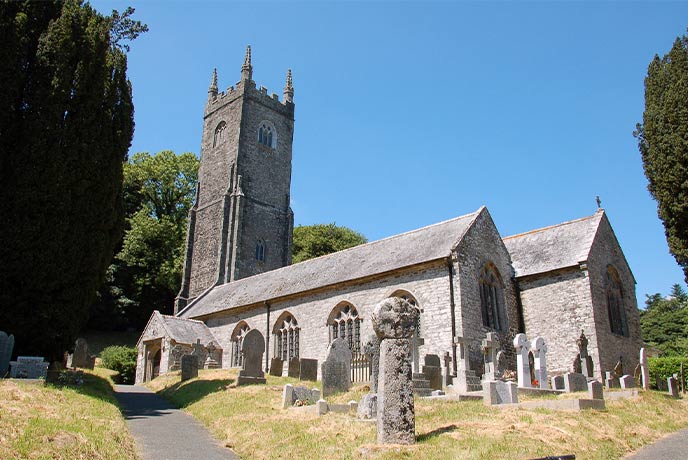
Hidden in a sheltered valley on Bodmin Moor, St Nonna’s Church towers over the tiny village of Altarnun and is commonly known as ‘the Cathedral of the Moor’. Here you will find a cluster of pretty houses gathered around a ford in the babbling stream, a tranquil spot by anyone’s standards, making the impressive size of the church somehow unexpected.
Named for Saint Nonna, the mother of Saint David, this grand building dates from the 15th century. Besides the lofty columns, which are made from a single block of granite, and the enormous font with its strange carved faces, perhaps the most charming feature of the church are its 79 ancient wooden bench ends. Created by local man, Robert Daye, between 1510 and 1530 they are covered in fascinating reliefs of everyday life, from the faces of local people and scenes of village life, to mermaids, devils, angels, saints, sea monsters, fruit, flowers and even a jester.
A short walk from the church is the atmospheric St Nonna’s Well, where its sacred waters were once thought to cure madness.
St Mary Magdalene, Launceston

The town of Launceston is not only home to one of the finest castles in Cornwall but its church, St Mary Magdalene, is one of the most richly decorated. The extraordinarily detailed medieval carvings that grace the outside of the building are unequalled anywhere in the region.
The church was completed in 1524 and paid for by Sir Henry Trecarrell of Lezant. Sadly though the story goes that his generosity to the town was born out of grief as he intended the building to be a memorial to his infant son. According to local legend Trecarrell had purchased a large amount of granite from a local quarry intending to build a new family home, but after his son’s death decided to donate the stone for the construction of the church instead. And what a gift it was to the town!
The elaborate ornamentation is just exceptional, the exquisite tracery looks like delicate patterns of lace, except that it is carved out of stone. Coats of arms, fleur-de-lis, flowers and figures cover the walls. Look out for St George and the dragon as well as Henry Trecarrell himself and his beloved wife, alongside luscious pomegranates, the emblem of Catherine of Aragon and a popular motif at the time. And of course there is Mary Magdalene herself, reclining in a niche in one of the walls.
Besides the delights of the castle and the parish church, Launceston has plenty more to offer visitors, from cosy cafés to antique shops and woodland walks nearby.
St Neot Church, St Neot
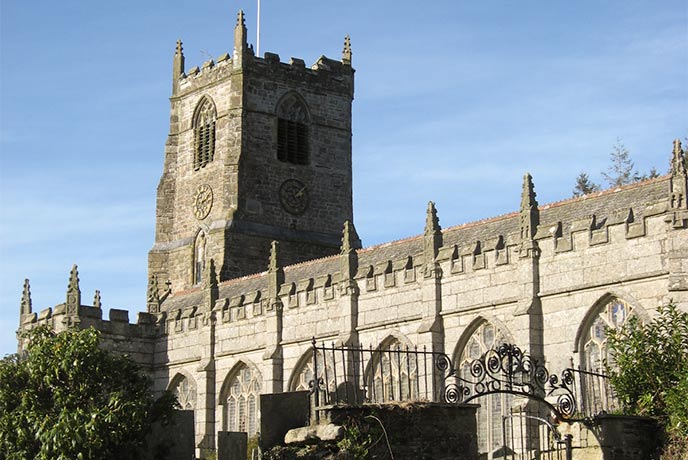
The quiet moorland village of St Neot huddles around its 15th century church in the stunning Glynn Valley. Named after a Saxon monk, whose curative holy well can be found a short walk away, this church is something of a hidden treasure.
There is an impressive early medieval tower and the churchyard boasts eight remarkable ancient Cornish crosses, some intricately carved with Celtic designs, but it is the interior of the church that has led to it being described as the most beautiful in Cornwall.
St Neot is considered to have the finest stained glass windows in the Duchy. These 16 wonderful windows were constructed by highly accomplished craftsmen in the 15th and 16th centuries making them around 500 years old. With the light pouring in from outside, the glass is a magnificent riot of colour and craftsmanship. Some 350 individuals are depicted with twelve of the windows, illuminating the life of Saint Neot himself, while others display scenes from the story of Creation, the Madonna and Child and other saints, such as St George.
Bodmin Moor is an area of dramatic untouched beauty, the perfect place to escape into the wilds, and its isolation means that there’s even the chance to do a little star-gazing.
St Michael’s Chapel, Rame Head

The tiny chapel of St Michael’s stands alone on a dramatic, exposed headland on the very tip of the Rame Peninsula not far from the entrance to Plymouth Sound and the Mount Edgcumbe estate. The views from here are breath-taking, encompassing the sweep of the coast in all directions and a vast vista of sea and sky.
It is this stunning setting rather than the simple stone building itself that makes this place so special. The imposing promontory has been drawing people to it for hundreds if not thousands of years. Although the chapel was consecrated in 1397, it is possible that its Christian origins date back much further. It is thought that a hermit may once have built a cell here on Rame Head, living a peaceful life of prayer and solitude.
Besides its religious purpose, this site was also important for the navigation of passing ships; there are stories that the monks here would light a beacon on the high ground as a guide to ships coming into port. A watchman was also stationed here to keep a lookout for enemy vessels, and it is said that the Spanish Armada was spotted from these heights.
Rame Head makes the perfect place to while away a summer’s evening, sitting with your back against the sun-warmed stones of the chapel gazing out to sea and the distant deep blue line of the horizon.
St Senara’s Church, Zennor
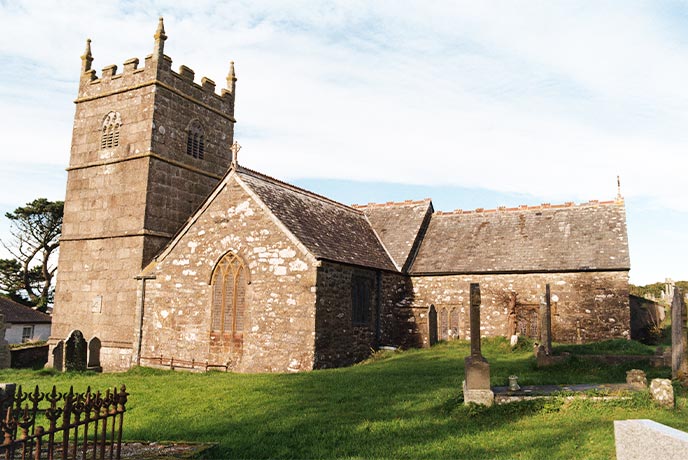
Steeped in myth and legend, St Senara’s beautiful church in Zennor is a must-visit for anyone looking for a scenic sight with a magical backstory. Over a century old, this ancient church is still very much a part of the local community, with Sunday services every week and ceremonies making the most of the spectacular location.
Inside the church you’ll find one of the most visited benches in all Cornwall. The Mermaid Chair is famous amongst locals and visitors alike and shows a fair sea maiden combing her hair. As the story goes, a beautiful stranger with eyes like the sea kept visiting the cliff top church before falling in love with one of the local men who sang at the church. The two ran (or rather swam) away together and made a new life under the Cornish waves. The tale acted as a reminder to the locals not to follow mermaids into the sea.
There is a stunning coastal walk from Zennor to St Ives, so you can visit this picturesque church on foot, before passing the very coves where mermaids once swam. We also recommend popping into the much-loved local, The Tinners Arms, for a pint and a cosy sit down by the fire - it’s the perfect pitstop for your Cornish walk.
If these beautiful Cornish churches have captured your imagination, discover one of our cosy holiday cottages and start your adventure in Cornwall!


